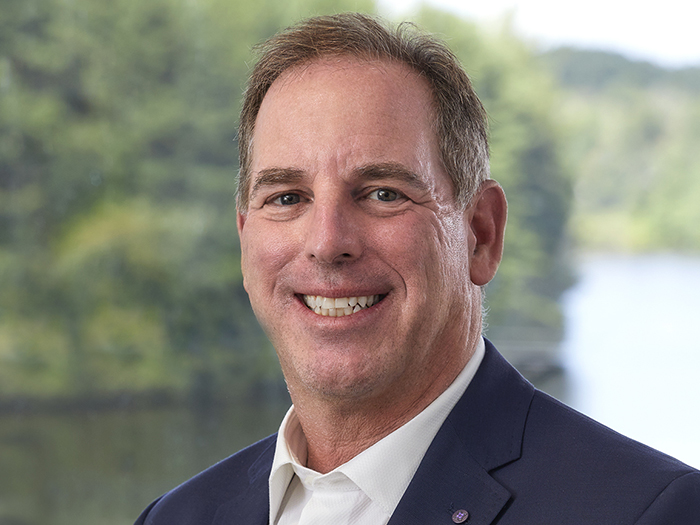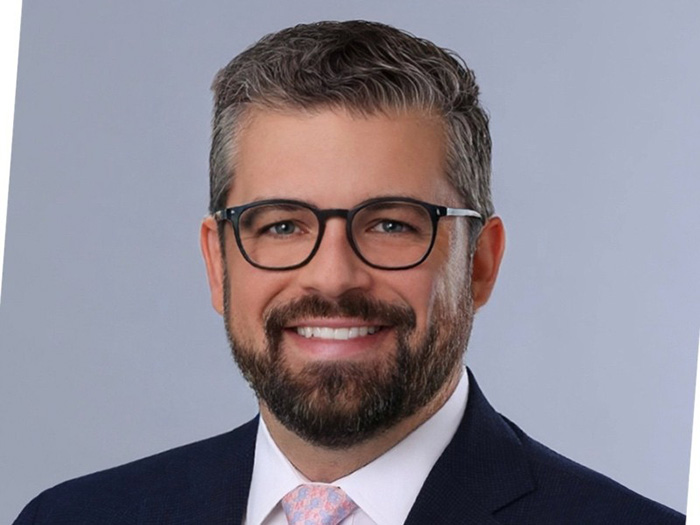For Suicide Prevention Month, Brown & Brown’s Joel Axler Talks Safeguarding Worker Mental Health

Marking National Suicide Prevention Awareness Month, Risk & Insurance recently caught up with Dr. Joel Axler, national behavioral health leader at Brown & Brown. What follows is a transcript of that discussion on the critical role of mental health in the workplace, concerning suicide rates across the workforce and the importance of resources such as employee assistance programs, or EAPs. It has been edited for length and clarity.
Risk & Insurance: Escalated by COVID, more employers are placing a focus on the mental health of their employees and finding the return on that focus is reduced absenteeism and presenteeism, as well as increased overall morale. But for some, the urgency is already fading. Why is it important that we continue to keep mental health at the top of the priority stack?
Joel Axler: As a practicing child, adolescent and adult psychiatrist, I have observed a significant increase in the need for mental health support in the workplace. In my clinical practice, I conduct numerous evaluations for employees taking leave, with a particular focus on young adults aged 32 and younger.
The prevalence of stress, anxiety and suicidal ideation in our society is alarming. Suicide rates have risen among 10-to-34-year-olds, and suicidal thinking has become a pressing concern.
Given these trends, it is crucial for employers to prioritize the mental wellbeing of their workforce. By addressing mental health issues proactively, companies can not only support their employees but also mitigate the negative impact on productivity and overall morale.
R&I: You can offer an EAP, but that’s no guarantee anyone will use it. What steps can employers take to encourage their employees to engage with the mental health resources on offer?
JA: Promoting awareness is crucial. Many of my client groups have asked me to speak during September, which is Suicide Prevention Awareness Month, to address this critical issue. Globally, 700,000 deaths per year are attributed to suicide.
Educational workshops and training for leaders are also essential. Mental health is a silent illness, so we need to provide ongoing awareness and what I call “mental health first aid.”
Access to resources is key, and employers must ensure their employees utilize EAPs. However, many employers embed their EAP in disability carriers, resulting in less than 1% utilization. Reimagined EAPs or behavioral health navigators can achieve engagement rates of 10 to 15%.
Partnerships with organizations that address social determinants of health — which are the conditions of life that affect our wellbeing, such as income, education, housing and discrimination — are extremely vital to our mental health. Employees should know which community resources are available to them.
Promoting work-life balance is also crucial. I recently saw a patient who was overwhelmed due to being a new parent and working shifts. His boss was making him stay late, but he needed to get home to his wife and two-year-old child. This situation was becoming extremely debilitating for him.
Finally, we need to ensure that we have evaluations to understand the prevalence of depression, anxiety and substance abuse. Primary care physicians can incorporate questionnaires and assessments such as the PHQ 9 and GAD 7 into their practices when seeing new patients or during regular checkups.
R&I: What strategies should employers and leaders consider as they seek to promote a healthier work-life balance and support their employees’ mental wellbeing?
JA: Promoting mental health in the modern workforce starts with CEOs taking ownership and leading with empathy. If they can share their own personal stories and invest in reducing presenteeism and absenteeism, it can create a trickle-down effect throughout the organization.
I conduct workshops for HR leaders on navigating the workforce, focusing on empathy, resilience and stress management. These sessions provide HR professionals with the tools to recognize the soft, moderate and severe warning signs that an employee may be struggling with their mental health.
By regularly offering these types of webinars and programs for HR leaders and all staff, we can efficiently promote awareness and decrease stigma surrounding mental health in the workplace. It’s a cost-effective approach that can yield significant benefits for both employees and the organization as a whole.
R&I: An approach we began hearing about during COVID is to ask all supervisors to start one-on-one meetings with a few minutes of human-to-human connection and non-work conversation. Do you support that approach, and what kind of difference can that make in a company’s culture?
JA: Starting meetings with non-work conversation is extremely important, as it demonstrates compassion and helps to reduce tension. Empathy is the ability to put yourself in someone else’s shoes, and it’s a crucial skill in today’s hybrid work environments.
In the past, when we were in offices, we would start meetings by greeting each other with warm, personal conversations. However, with the shift to hybrid work, we’ve lost some of that intimate touch. By taking a few minutes at the beginning of a Teams meeting to ask about someone’s vacation, check on a sick family member or discuss plans for a long weekend, we show that we value our team members as individuals.
These small gestures of kindness, which I call “nice-itudes,” are empathic and help to create a mindful approach to work. They acknowledge the importance of each team member and their contributions. This is especially important when facing a tough meeting or when there are high expectations, as it helps to alleviate stress and foster a positive team dynamic.
R&I: What can companies do to address the underlying causes of mental health issues among employees — such as economic pressure, social isolation and substance abuse — even though they can’t directly impact these problems?
JA: Addressing mental health issues among employees requires a partnership between the company and its workforce. Leaders can promote awareness and provide resources such as employee assistance programs (EAPs) and behavioral health programs.
Additionally, fostering an environment where employees feel comfortable seeking help from their managers or designated “mental health allies” within the company is crucial. These allies, typically HR staff or company leaders, are knowledgeable about available resources and can guide struggling employees to the appropriate support, such as EAPs or mental health providers covered by their employee benefits.
Regular check-ins by managers can also make a significant difference. Instead of focusing solely on project deadlines and deliverables, managers should approach employees with supportive gestures, asking how they are doing and if they need any assistance. Offering to allocate additional resources or personnel to help meet deadlines while ensuring the employee’s wellbeing can demonstrate genuine care and support.
R&I: Tell us more about having mental health allies in the workplace — is this a growing trend among organizations?
JA: Several companies have implemented mental health ally programs, which involve providing mental health awareness training to employees. At Brown & Brown, we offer a 45-minute training session to raise awareness and navigate the wellbeing among our employer groups.
Additionally, we can facilitate “mental health first aid” courses, which are like CPR training for brain health. The individuals who complete these courses often become passionate about supporting their colleagues’ emotional wellbeing and volunteer to become mental health allies.
These allies serve as a support system for their peers, much like sponsors in substance abuse programs such as Alcoholics Anonymous. They are dedicated to promoting emotional brain health and providing a supportive structure for their colleagues and friends within the workplace.
R&I: What constitutes mental health first aid, and what does it look like in practice?
JA: Mental health first aid should be performed by a certified organization with established, foundation-driven programs led by experienced clinicians who understand mental health. These programs provide interactive exposure to real-life scenarios, creating a strong foundation for participants.
Mental health first aid is to someone with an emotional health illness as CPR is to someone who may collapse and require immediate attention to their airway, breathing and cardiac compression. Certified mental health first aid programs equip individuals with the skills needed to respond effectively in such situations.
R&I: The construction industry is facing a high incidence of suicide across its workforce. What do you think are some of the key risk factors driving that trend?
JA: Several key risk factors can contribute to the high rates of suicide in the construction industry. One of the most significant is relationship issues, such as divorce, separation or a breakup.
Another factor is acute crises, which may include conflicts with peers or stress from the political environment or natural disasters. Substance abuse is also a major concern, as there is a strong correlation between problematic substance use and suicide.
Additionally, physical health problems can play a role, particularly among the elderly population where there is a high rate of comorbidity. Lastly, job and financial problems are among the top leading causes of suicide in this industry.
R&I: What is the importance of ongoing mental health awareness training for all employers?
JA: Recognizing the importance of mental health awareness training, providing mental health first aid and developing an allies program should be a top priority for employers in 2025. While it doesn’t require a significant financial investment, it does demand a commitment of time.
The benefits of such initiatives are far-reaching, positively impacting employee engagement and productivity, and reducing absenteeism and presenteeism. However, the challenge lies in the misconception that a one-time training session, such as one conducted in 2020, is sufficient.
Mental health is a silent illness, and it requires consistent attention. Employers should conduct mental health awareness training sessions multiple times a year to effectively support their workforce.
R&I: What are the key actionable steps that employers should take or investigate to enhance their existing mental health benefits, especially as we approach Suicide Prevention Month?
JA: Firstly, employers should promote mental health awareness and ensure that resources are available to identify those struggling with emotional or physical health issues. It’s crucial to provide employees with access to effective behavioral health care, ensuring that their insurance carriers have appropriate resources and an adequate network of providers to support members in need.
Secondly, fostering a sense of connectedness among employees, their families, the community and social institutions is essential. Social isolation can be detrimental to mental health, so encouraging and facilitating these connections is vital.
Lastly, employers should encourage individuals to develop resilience by prioritizing self-care practices such as getting proper sleep, eating healthy, regular exercise and spending time outdoors. This holistic approach, combined with nurturing connections with loved ones, helps individuals adapt to life’s challenges and navigate through difficult times. &








